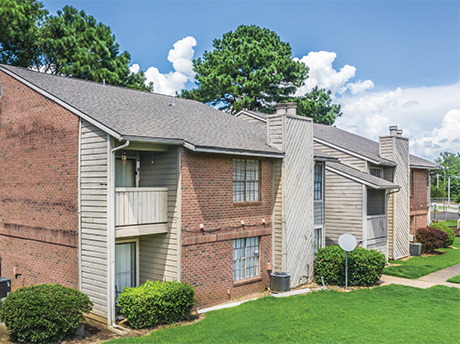It’s no secret: The multifamily real estate market in Memphis has experienced a significant decline in investment sales volume and total transactions over the past year. But with signs of life coming quickly on the horizon, how can you be ready to capitalize?
According to CoStar Analytics, the 58.7 percent sales volume decline in Memphis is in line with the national average, but we have seen a larger dip in total transactions. The steep and rapid decline is directly correlated to the Federal Reserve’s ongoing battle of taming inflation. The Fed has increased the benchmark federal funds rate at 10 consecutive meetings. And while there was a pause at the June meeting, more rate hikes are expected this year.

What does this mean for investors and operators? The cream will rise to the top.
Some investors may default on loans due to floating-rate debt and the rapid rate increases, while others may struggle to refinance or sell without incurring losses as their cheaper rate caps expire. However, those that have executed their business plans effectively and added value to their apartment complexes by raising rents can expect some cushion.
Another interesting factor to examine is the vacancy rate, which has increased to 13.4 percent. This increase is better understood when looked through the prism of deliveries. Currently, there are 2,900 units under construction, which may keep the vacancy rate artificially inflated until demand catches up. In comparison, market effective rent has increased 1 percent over the past 12 months, which is in line with the national average.
Moreover, there has been a notable repositioning opportunity within the city, with 16,000 units renovated since 2010 compared to 13,000 units delivered. Construction activity has shifted from suburban submarkets to the urban core, taking advantage of tax incentives in Downtown and Midtown Memphis. This shift opens opportunities for investors to reposition aging suburban assets and address the lack of new development in high-demand, lower-income neighborhoods.
Areas that the Memphis multifamily market shines are cap rates, average price per unit and demand drivers. Cap rates currently average 6.8 percent, a full percentage point higher than the national average. The average price per unit in Memphis is $94,000, significantly lower than the national average of $250,000. These indicators highlight the undeniable value this market offers.
The city’s status as a major logistics hub in the Mid-South, supported by its central location, strong infrastructure and the presence of FedEx, further bolsters the apartment market.
Already the second-busiest cargo airport, Memphis International Airport’s FedEx Hub is undergoing a $1 billion renovation project expected to be completed in 2025.
In addition, a major investment in West Tennessee that will help bolster both the industrial and multifamily markets is the $5.6 billion investment in Blue Oval City by Ford Motor Co. and SK Innovation. Blue Oval City will be the mega-site to produce Ford’s electric vehicles and batteries on a 3,600-acre campus. Delivery of the mega-site is anticipated for 2025 and will bring more than 6,000 jobs.
The underlying strength of Memphis, with its robust job market and the ongoing development and investment in key industries, provides a solid foundation for a multifamily rebound. While there may be short-term challenges and fluctuations, the long-term forecast remains positive.
To capitalize on this unique market, investors should prepare their “war chest” by being financially ready for acquisition opportunities. While there may not be a significant influx of distressed assets, there will be opportunities to purchase properties from operators struggling with debt or those that have not executed their business plans effectively.
The Mortgage Bankers Association estimates approximately $2.6 trillion of loan maturities expected through 2027, with multifamily loans accounting for 38 percent of the total. CRED iQ estimates $49 billion in multifamily loan maturities in 2024 alone.
Sellers will face a refinance or selling decision in 2024, and many theorize that sellers will opt to sell and move on, rather than refinance at increased rates. This means that the delta between bid and asking price will compress as seller expectations settle to meet the market.
By preparing their financial resources and staying vigilant monitoring market trends, investors can navigate the current landscape and position themselves for success.
— By David Dorris, Senior Associate, Marcus & Millichap. This article was originally published in the July 2023 issue of Southeast Real Estate Business.


